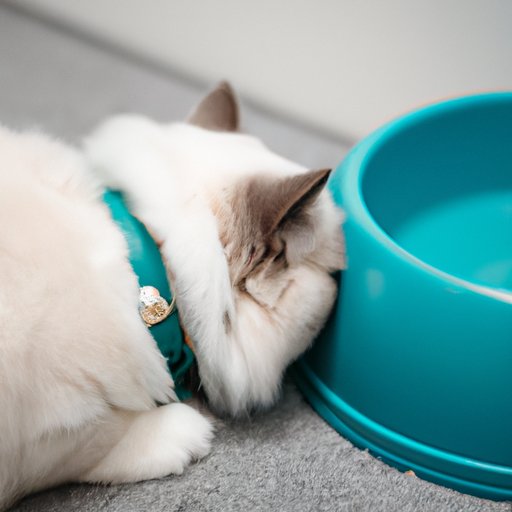
Introduction
Cats are commonly referred to as fastidious creatures that are incredibly clean and can take care of themselves. However, a cat’s impeccable grooming skills do not always translate into good bathroom habits, and a cat that pees outside of the litter box can be frustrating for pet owners. There are many reasons why cats may pee outside the designated area, from underlying medical concerns to territorial marking. This guide will provide you with a range of tips to stop your cat from peeing in the house and improve your cat’s overall litter box habits.
Addressing the Root Cause
The first step in stopping your cat from peeing in the house is to identify any underlying medical causes. Cats that avoid the litter box may have underlying conditions such as urinary tract infections, feline leukemias, or other conditions that prevent them from using the litter box comfortably. In order to prevent litter box problems due to medical issues, it is important to monitor your cat’s eating habits, drinking, and urination output regularly, and to schedule routine vet check-ups to address any potential medical issues. Addressing any underlying medical conditions can significantly help to stop your cat from peeing in the house.
Litter Box Training
Properly training your cat to use the litter box is vital in preventing them from peeing anywhere else in the house. The first step is ensuring that the litter box is in a suitable location. Place it in a quiet area, away from high traffic areas, and make sure it is easily accessible. If you have a large home, consider setting up multiple litter boxes. The litter box should also be large enough to fit your cat, with enough room to comfortably turn around. The type of litter used is also important, as some cats may prefer different types of litter, such as clumping or non-clumping formulas.
Additionally, modifying your cat’s behavior can help to ease litter box issues. Start by placing the cat in the litter box every few hours and gently scratching the surface of the litter to encourage them to use it. Once the cat has used the litter box, give them praise and rewards, such as treats or toys. If your cat has an accident outside the litter box, clean it up immediately and place the waste in the litter box to show your cat where it is supposed to go.
Creating Defined Spaces
Cats enjoy having their own defined spaces and territories. Creating a designated area for your cat can help to prevent territorial marking and litter box issues. Dedicate an area of the home, such as a room or a corner with bedding and scratching posts, to your cat. Encourage your cat to use this space by playing and relaxing with them in the area.
Creating a specific area for the litter box can also be helpful. Place the litter box in a location that is quiet and easily accessible to the cat. Avoid placing it in high traffic areas or near noisy appliances, such as washing machines or dryers, that can be unsettling for your cat.
Mental and Physical Stimulation
Stress and boredom can often lead to litter box issues. Keep your cat mentally and physically stimulated to prevent them from seeking alternate areas for urination. Provide interactive toys and scratching posts to encourage playful behavior. Consider using puzzle feeders to keep your cat mentally stimulated while eating. Additionally, ensure that your cat gets enough exercise each day through playtime or outdoor walks. Cats that are bored or anxious can benefit from additional stimulation, which leads to improved litter box behavior.
Reward-Based Training
Reward-based training is an effective way to encourage good litter box behavior in cats. When training your cat to use the litter box, reward them with treats or praise each time they use it. The key is to provide positive reinforcement regularly, which encourages your cat to continue the desired behavior. Consistency is also important. Maintain a regular schedule for feeding, playtime, and bathroom activities.
Conclusion
In summary, stopping a cat from peeing in the house is a process that requires patience and consistency. Identifying and treating underlying medical conditions, proper litter box training, creating defined spaces, providing mental and physical stimulation, and reward-based training can all help improve your cat’s litter box habits. Remember that cats have unique personalities and preferences for the litter box, so it may take time and experimentation to find a solution that works for your cat. With effort and perseverance, you can successfully prevent your cat from peeing in the house.
We hope these tips will help improve your cat’s behavior and that you will share your own experiences and tips in the comments section below.





